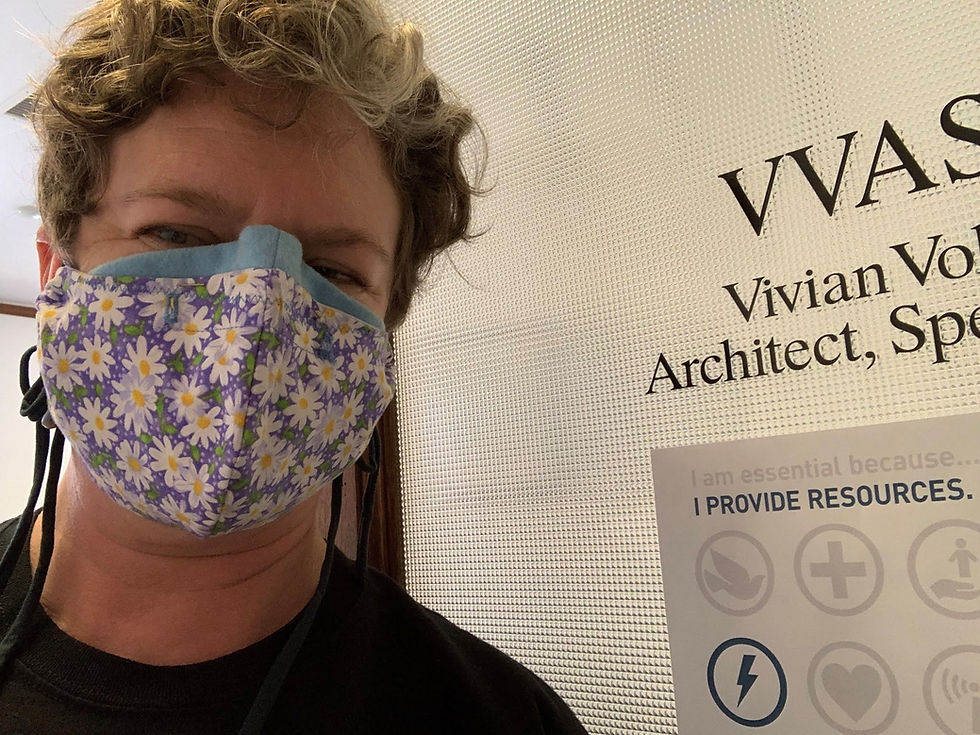Mockups for Range—for Glass?
- Vivian Volz
- Jul 23, 2014
- 3 min read
Updated: Dec 1, 2024

We all expect natural materials to vary in color, pattern, and texture. Concrete, too, and other things that are, let's face it, made of mud. We wouldn't dream of building a major project without demanding mockups for the marble panels or the "Brazilian cherry" wood floors. But we need mockups for glass, too! Who knew?
But glass is manufactured, you say? It's a precise material made and fabricated by experts in a highly controlled environment, right? Well, this is, perhaps, precisely the reason we must specify a mockup. Because glass does vary, and we expect it not to.
I'm helping a client manage some owner expectations, that is to say, disappointment, with insulating glass units (IGUs) on a new building. Little rainbow striation patterns appear in the façades in certain light and at certain angles. Some seem vertical, others horizontal, and some lites have little or no pattern.
These patterns are well-understood in the glass industry, but not well-controlled. They are called strain patterns or quench patterns, and they can be more pronounced in heat-treated glass, tempered glass, and IGUs. And GANA and the ASTM committees on glass insist that these patterns, and variations in them, are not defects and not cause for rejecting the work. Unfortunately, that doesn't make the owner feel better. (The photo above does not depict this client's building. It does, however, depict both common strain patterns, the grid type and the edge type.)
So now GANA has put glass in the same category, from a design standpoint, as maple and limestone: things that vary, even though sometimes we wish that they wouldn't. And that means mockups, my friends.
With wood and stone, we might settle for sets of three or five samples representing a range of possible visual effects. But quench patterns in glass depend on light and view angles and orientation - we could have twelve samples of the same IGU makeup and never see a single rainbow, if we didn't bother to take them outside. So GANA suggests a mockup, on site, oriented the same direction as the major facade, and available for comparison throughout construction. And, reluctantly, I am forced to agree. For if GANA and ASTM C1048 insist that quench patterns are not defects, then it's up to the design team to narrow the limits of acceptable variation.
There's an extra added bonus, of course, to a mockup. It shows the client what's reasonable to expect the project to look like. So if the mockup is covered in little wavy rainbows and the client objects, it's not the whole facade he objects to, just the mockup. There's still time to make a change, or, if not, the client has time to adjust to the idea.
So here are the pieces you need, if you want to defend against excessive variation in the appearance of glass.
First, you must specify a fenestration mockup on site, oriented the same as the major facade, and, ideally, shaded on the interior side. This might be in addition to the performance mockup - we are talking about exerting tight control, after all, not building a shed in the backyard. And be sure that the mockup specified is for visual effect and for the expected range of variation in the glass. Make sure it is clear that the owner and client reserve the right to reject glass outside the ranges represented on the mockup.
Next, trace the mockup requirements back into Division 01, to be sure the mockup is required to remain available for review during construction of the assembly it represents.
And finally, check the construction contract to understand who has the right to reject work. The Architect has that right in AIA contracts, but your mileage may vary with other contract forms.
Then make sure the owner attends the mockup review, and that it's viewed more than once, at different angles and times of day, if possible.
For this client, we may be chalking the variations up to lessons learned, or we may be able to make a few strategic corrections. But we have certainly learned. P.S.: Even if the owner does not want to pay for a mockup, offering one opens the opportunity to educate about what to expect. Thanks, Liz O'Sullivan, for the twitter conversation!
Photo Credit: Vivian Volz, copyright 2014.




Comments